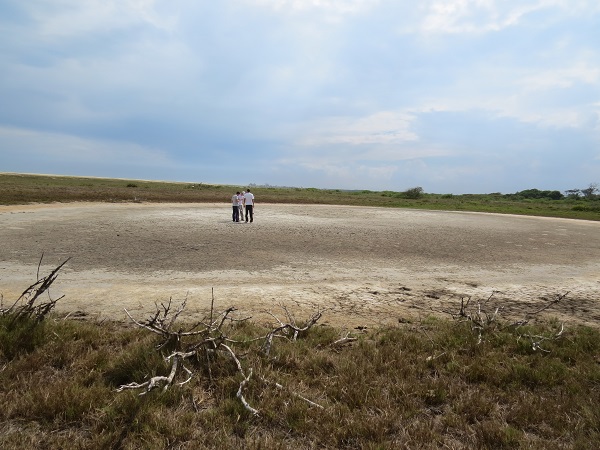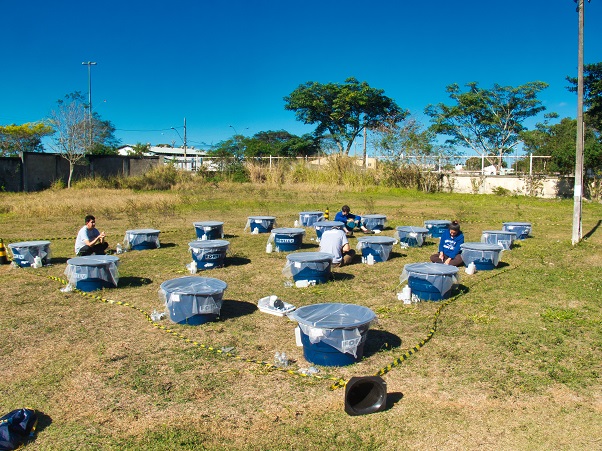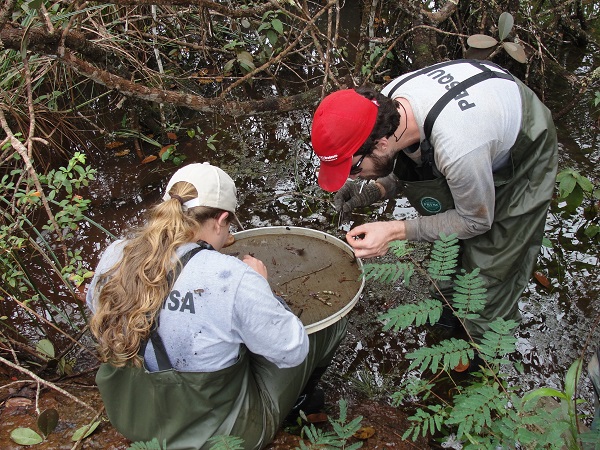Community Regulation and Structuring
Communities of aquatic organisms – or the ensemble of populations of the species present in a given habitat – are structured and regulated by various interrelated processes. This research line has three main topics: structural factors of communities, trophic ecology and the effects of species diversity on ecosystem processes.
Environmental features - such as nutrient level, dissolved oxygen, hydrology, among others - influence organism distribution at community level. Furthermore, individual dispersal within communities can also have a large influence on distribution patterns. We perform field observations and experimental studies to understand the distribution of macroinvertebrates, plankton, bacteria and aquatic plants in habitats such as igarapés (small Amazonian streams), lakes, lagoons and even inside the rosettes of tank bromeliads.
Species composition is intimately related to the structure of trophic chains and ecosystem function. We want to understand the factors that affect the stoichiometry (proportion of nutrients, such as carbon, nitrogen and phosphorus – C:N:P) in different trophic levels. This is a key question since organism stoichiometry is relevant for the energy transfer across trophic levels, directly affecting recycling patterns and nutrient availability in the medium.
Finally, we try to understand how diversity patterns in communities can affect ecosystem processes, such as nutrient cycling, primary productivity and decomposition. We ask how changes in species diversity can have impacts at larger scales. This question has practical implications, since species loss, habitat changes and degradation, and changes in the trophic structure of communities due to species introductions are challenging problems of our times.
<< Previous Next>>






